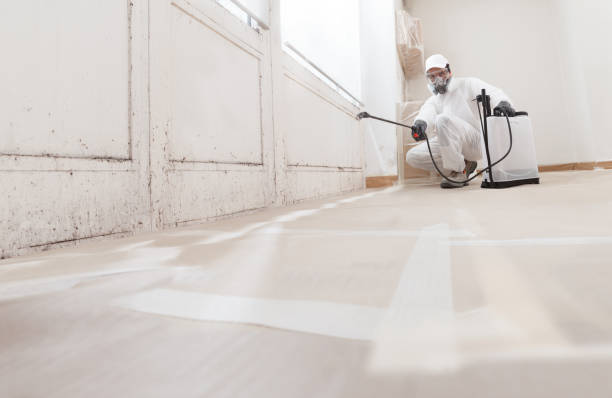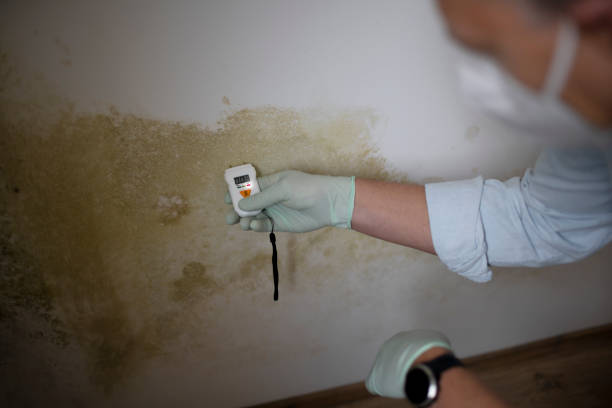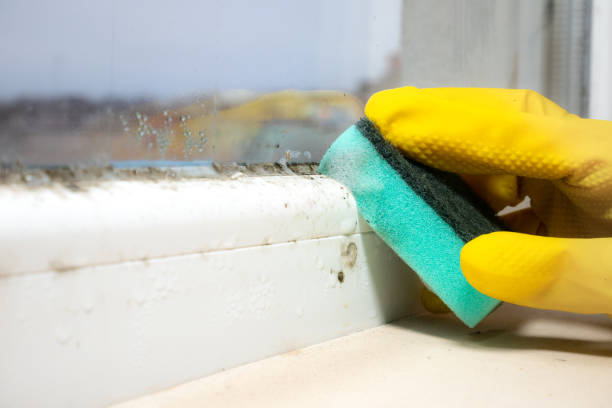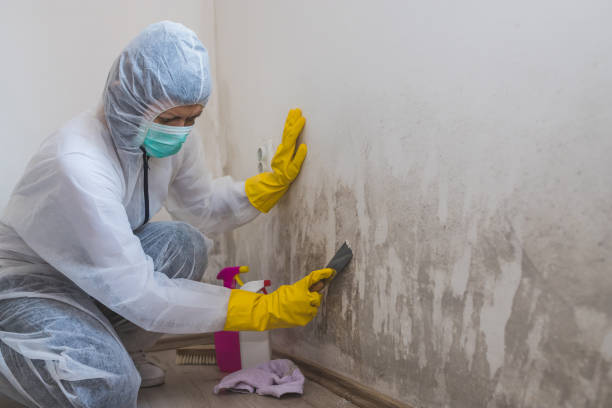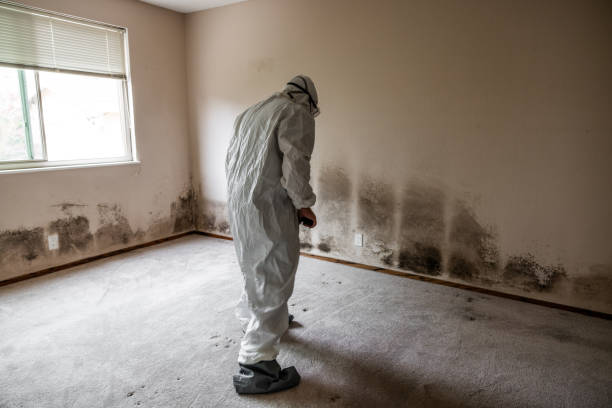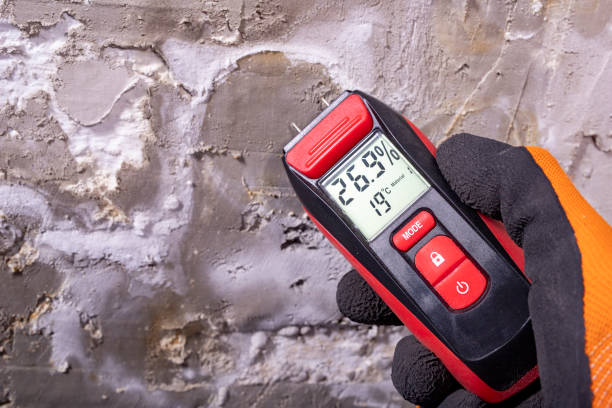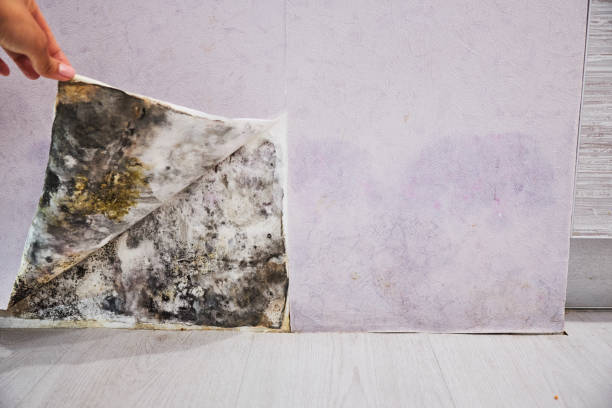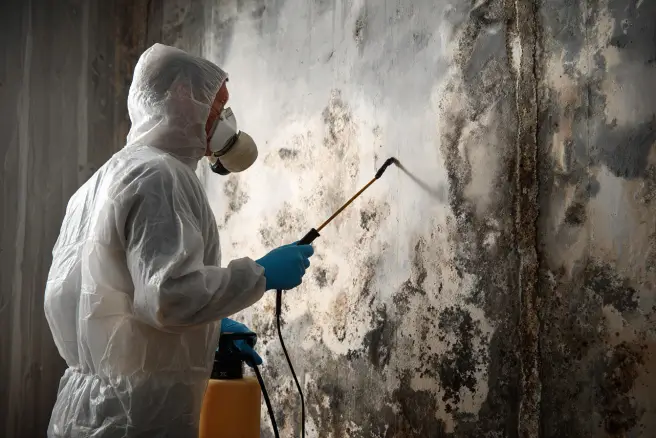
Water damage is one of the most common issues faced by homeowners and businesses, often with significant consequences if not addressed promptly. Understanding the causes of water damage and its connection to mold growth can help mitigate risks and protect your property.
How a Mold Specialist Vero Beach Can Address Common Causes of Water Damage
- Plumbing Issues: Leaky pipes, burst pipes, and worn-out plumbing fixtures can allow water to seep into walls, floors, or ceilings.
- Roof Leaks: Damaged or missing shingles, clogged gutters, or deteriorated flashing can permit rainwater to infiltrate your home.
- Flooding: Natural disasters like heavy rainstorms or flash floods often lead to severe water damage.
- Appliance Failures: Malfunctioning appliances such as washing machines, dishwashers, and water heaters can release large amounts of water if they fail.
- HVAC System Problems: Poorly maintained heating, ventilation, and air conditioning systems may leak moisture over time.
- Sewer Backups: Blocked or overloaded sewer lines can cause wastewater to back up into your home.
How Water Damage Leads to Mold Growth
- Excessive Moisture
Mold thrives in damp conditions. When materials like wood, drywall, or carpets absorb excess moisture during a leak or flood, they create a perfect breeding ground for mold. - Humidity Levels Above 60%
High humidity levels caused by water infiltration encourage condensation on surfaces like walls and windowsills. This contributes further to moisture buildup. - Delays in Drying Efforts
If wet areas are not dried within 24–48 hours after initial exposure to water damage, mold spores have sufficient time to germinate and spread. - Organic Materials as Food Sources
Many building materials contain organic substances (e.g., cellulose in wood) that serve as nutrient sources for mold colonies.
Preventive Measures Against Mold After Water Damage
- Address leaks immediately—whether it’s a dripping pipe or a roof issue.
- Use dehumidifiers and fans to reduce indoor humidity levels quickly after an incident involving excess moisture.
- Remove wet materials such as carpets or furniture that cannot be dried adequately within 48 hours.
- Regularly inspect your home’s plumbing system for signs of potential leaks or corrosion.
- Ensure proper ventilation in areas prone to dampness (e.g., bathrooms, laundry rooms).
| Type of Water Damage | Risk Level for Mold Growth | Suggested Action |
| Plumbing Leak | Moderate | Repair leak promptly; dry area within 48 hours |
| Roof Leak | High | Fix damaged roof immediately; check attic insulation |
| Flooding | Very High | Seek professional cleanup services; remove standing water quickly |
| Appliance Failure | Moderate | Turn off the appliance; address affected areas fast |
By understanding common causes of water damage and how they contribute to mold growth risks, property owners can take informed steps toward prevention and mitigation strategies tailored specifically for their circumstances. Always act swiftly when dealing with moisture problems for long-term protection against structural damage and health-related concerns stemming from mold infestations.
Effective Mold Remediation Vero Beach Services to Tackle Water Damage
Water damage can cause significant problems for homeowners, ranging from structural damage to potential health risks caused by mold growth. Professional water damage cleanup services play a crucial role in mitigating these risks and ensuring your home remains safe and habitable. Below, we’ll explore how these services work and why they are essential for preventing mold infestations.
The Importance of Professional Mold Removal Vero Beach Services
- Thorough Inspection: Professionals have the tools and expertise to assess the extent of water damage effectively. They can identify hidden moisture behind walls, under floors, or in other hard-to-reach areas that DIY methods often overlook.
- Specialized Equipment: Cleanup companies use industrial-grade equipment such as dehumidifiers, air movers, and moisture meters to ensure comprehensive drying of affected areas.
- Mold Prevention Techniques: Experts understand how to remove excess moisture while applying antimicrobial treatments to inhibit mold growth.
- Safe Waste Removal: Damaged materials like drywall or carpeting may need removal if they cannot be salvaged. Professionals handle this safely while following industry standards.
What to Expect During a Mold Inspection Vero Beach Process
- Identify the source of water (e.g., leaks, floods)
- Evaluate the extent of visible and hidden damage
- Develop a customized restoration plan
- Use pumps or vacuums to remove standing water efficiently
- Remove any damaged furniture or materials beyond repair
- Deploy high-powered dehumidifiers and fans for thorough drying
- Monitor humidity levels over days if necessary
- Disinfect affected surfaces using antimicrobial solutions
- Clean salvageable personal items like furniture or clothing
- Repair damaged structures such as flooring or drywall
- Repaint walls if necessary
Why Choosing Professionals for Water Damage Restoration Vero Beach FL is Better Than DIY
| Benefit | Description |
| Expertise | Professionals understand how different materials react to water exposure |
| Time Efficiency | Quick response reduces the likelihood of secondary issues like mold |
| Advanced Equipment | Access to tools designed specifically for large-scale drying and cleanup |
| Mold Prevention | Proactive measures reduce future risks associated with microbial growth |
Finding the Best Mold Remediation Vero Beach FL Has to Offer
- Certification by organizations such as the Institute of Inspection Cleaning and Restoration Certification (IICRC).
- Availability for emergency response (24/7 service ensures rapid action).
- Positive customer reviews highlighting reliability and effectiveness in preventing long-term issues.
By hiring experienced professionals like the team from https://verobeachmoldremoval.com promptly after experiencing water damage, homeowners can prevent costly repairs while avoiding potentially hazardous conditions caused by unchecked mold growth.
Essential Steps for Effective Vero Beach Mold Remediation After Water Damage
Water damage can cause significant harm to your property and create the perfect conditions for mold growth if not addressed promptly. Taking the right steps immediately after discovering water damage can mitigate further destruction and reduce the risk of mold infestations. Below are six essential steps to follow when dealing with water damage in your home.
1. Ensure Safety First
Before addressing any water damage, prioritize the safety of everyone in your home.
– Turn off electricity: Water and electricity are a dangerous combination. Shut off power to affected areas until it’s safe to turn it back on.
– Wear protective gear: Use rubber gloves, boots, and masks if you need to assess or clean up the area yourself, especially in cases of contaminated water (e.g., from sewage backups).
2. Identify and Stop the Source of Water
To prevent further damage, locate the source of the water intrusion and stop it as quickly as possible. Common sources include:
– Leaking pipes or appliances (e.g., washing machines or dishwashers)
– Roof leaks caused by storms or damaged shingles
– Flooding from heavy rain or natural disasters
Once identified, shut off your main water supply if necessary. For severe issues such as burst pipes or structural leaks, contact a plumber or professional immediately.
3. Document the Damage for Insurance Purposes
Take photographs or videos of all affected areas before beginning any cleanup efforts. Clearly document visible damage to:
– Floors, walls, and ceilings
– Furniture, appliances, and personal belongings
This will help support your insurance claim when filing for compensation for repairs and replacements.
4. Remove Standing Water
Standing water can exacerbate structural damage and create an environment conducive to mold growth within 24–48 hours. Use tools such as:
– Wet/dry vacuums for small-scale flooding
– Mops and buckets for less severe puddles
For larger flooding situations, consider contacting a professional restoration service equipped with industrial-grade pumps.
| Tool/Equipment | Use Case |
| Wet/Dry Vacuum | Small puddles or minor leaks |
| Industrial Pumps | Large-scale flooding |
| Dehumidifiers/Fans | Drying out damp areas post-water removal |
5. Dry Out Affected Areas
After removing standing water, focus on drying out all damp surfaces thoroughly to prevent mold from growing within hidden spaces like drywall cavities or beneath flooring materials. Steps include: – Use dehumidifiers in humid rooms. – Open windows for ventilation if weather permits. – Run extraction machines alongside blowers/similar devices circulating indoor airflow
Effective Solutions for Mold Remediation Vero Beach FL and Preventing Water Damage
Water damage in your home can stem from a variety of sources, ranging from natural disasters to household malfunctions. Left unaddressed, even minor water damage can create the perfect environment for mold growth. Mold thrives in damp, humid conditions, making water-damaged areas particularly vulnerable. Understanding the common causes of water damage and their connection to mold is essential for prevention and effective remediation.
Common Causes of Water Damage
- Leaking Pipes: Corroded or burst pipes can lead to hidden water leaks behind walls or beneath floors. These areas often remain unnoticed until mold has already begun to grow.
- Roof Leaks: Damaged shingles or poor roof maintenance can allow rainwater to seep into your attic or ceiling spaces, creating wet conditions that promote mold development.
- Appliance Malfunctions: Washing machines, dishwashers, and refrigerators with faulty seals or clogged drains can cause localized flooding, resulting in moisture accumulation.
- Flooding from Storms: Heavy rainfall and hurricanes can overwhelm drainage systems and lead to flooding inside your home. Prolonged standing water is a major contributor to mold infestations.
- Poor Ventilation: Areas like kitchens, bathrooms, and basements are prone to high humidity levels when ventilation is inadequate. This trapped moisture provides ideal conditions for mold spores to grow.
The Link Between Water Damage and Mold Growth
- Moisture Retention: Mold requires moisture as a primary growth factor. Wet drywall, carpets, wooden structures, or insulation materials serve as food sources for molds once they come into contact with retained water.
- Time Sensitivity: Studies show that mold colonies can begin forming within 24–48 hours after an area has been exposed to water damage.
- Temperature Conditions: Most molds grow best in temperatures between 77°F (25°C) and 86°F (30°C), which aligns with many indoor environments affected by water issues.
Preventing Mold After Water Damage
- Dry affected areas immediately using fans or dehumidifiers.
- Remove porous materials like carpets that cannot be thoroughly dried within 48 hours.
- Inspect hidden areas such as behind walls or under flooring using moisture meters if necessary.
- Maintain low indoor humidity levels (ideally under 50%) year-round through proper ventilation systems.
| Source of Water Damage | Risk Level for Mold Growth | Recommended Action |
| Leaking Pipes | High | Fix leaks quickly; inspect walls/floors for hidden moisture |
| Roof Leaks | High | Patch roof promptly; check attic insulation |
| Appliance Malfunctions | Moderate | Repair faulty appliances; ensure floors dry completely |
| Flooding from Storms | Very High | Remove standing water immediately; sanitize surfaces |
| Poor Ventilation | Moderate | Improve airflow using exhaust fans or dehumidifiers |
By understanding these causes and addressing them quickly, you reduce both immediate risks posed by structural damage and longer-term hazards associated with uncontrolled mold growth.
Taking preventative steps now ensures not only the safety but also the longevity of your home’s structural integrity while protecting its occupants’ health from potential respiratory issues caused by exposure to toxic molds like Stachybotrys chartarum (black mold).
How Long Does Mold Removal Vero Beach FL Take and Why Acting Quickly Matters
Water damage restoration is a crucial process that requires prompt action to mitigate further harm to your property and prevent the growth of mold. The timeline for water damage restoration can vary depending on several factors, but acting swiftly is essential in reducing the risks associated with moisture-related issues.
Factors That Affect the Duration of Water Damage Restoration
- Minor leaks or small areas of damage may take only 1-2 days to address.
- Significant flooding or structural saturation may require several weeks to fully restore.
- Clean Water: Easier and quicker to address, typically from broken pipes or rainwater.
- Gray Water: From sources like dishwashers or washing machines; requires more cleaning and disinfection due to contaminants.
- Black Water: Highly hazardous, often from sewage or flooding; demands extensive remediation efforts and extended drying times.
- Porous materials like drywall, carpet, and wood absorb water quickly and may require replacement if severely damaged.
- Non-porous surfaces such as tile or metal are easier to dry and restore.
- High humidity levels can slow down the drying process while low humidity combined with proper ventilation accelerates it.
- The use of professional-grade drying equipment such as dehumidifiers helps achieve quicker results.
- Employing modern techniques such as thermal imaging for moisture detection can speed up the assessment phase.
- Professional services often use industrial-strength air movers, extraction tools, and antimicrobial treatments, reducing overall restoration time.
Why Immediate Action is Critical
- Mold can start growing within 24-48 hours in moist environments.
- Prolonged exposure to moisture allows spores to spread quickly through walls, ceilings, carpets, and furniture.
- Mold not only compromises indoor air quality but also poses health hazards such as respiratory issues and allergic reactions.
Steps for Fast Restoration
- Inspection & Assessment: Conducted by professionals using advanced tools to identify the source and scope of damage.
- Water Extraction: Immediate removal of standing water using pumps or vacuums is critical for preventing saturation.
- Drying & Dehumidification: Industrial equipment is used to eliminate remaining moisture from surfaces and air.
- Cleaning & Sanitizing: Thorough cleaning with antimicrobial treatments helps inhibit microbial growth like mold and bacteria.
- Repair & Restoration: Damaged structures are repaired or replaced based on their condition post-drying.
| Restoration Step | Approximate Timeframe | Key Tool/Technique |
| Initial Inspection | 1–3 hours | Thermal imaging cameras |
| Water Extraction | 1 day (depending on severity) | Pumps/wet vacuums |
| Drying/Dehumidifying | 3–7 days | Air movers/dehumidifiers |
| Cleaning/Sanitizing | 1–2 days | Antimicrobial solutions |
| Repairs/Restoration | Varies by extent (days – weeks) | General construction tools/materials |
Benefits of Acting Quickly
By responding promptly to water damage incidents:
– You reduce repair costs by minimizing long-term structural deterioration. – Preventative measures taken early lower health risks due to potential mold exposure. – Faster restoration ensures better preservation of personal belongings like furniture, electronics, or important documents.
Timeliness ensures that both visible damage and less apparent moisture problems are resolved effectively before they escalate into larger concerns such as extensive mold infestations or compromised structural integrity within your home.
- How Mold Remediation Professionals Vero Beach FL Address Water Damage and Prevent Mold Growth
- Mold Remediation Professionals Vero Beach FL: When to Call Experts Instead of Using a DIY Kit
- Mold Remediation Vero Beach: What It Is and Why It’s Important
- Effective Tips for Mold Removal Vero Beach: Say Goodbye to Stains on Textiles and Fabrics
- Effective Mold Removal Vero Beach: Understanding the Water Damage Restoration Process
- Understanding Mold Remediation Vero Beach and Its Impact on Your Health

